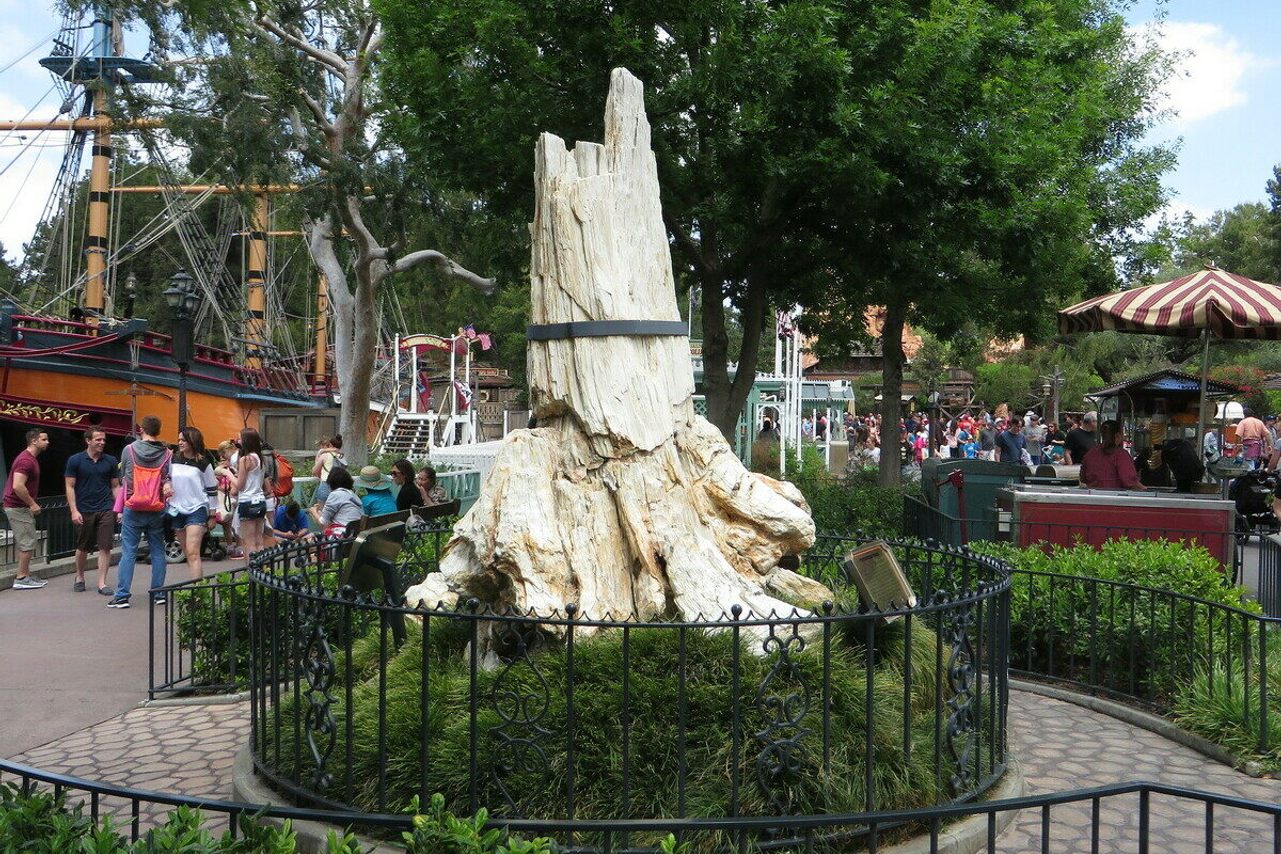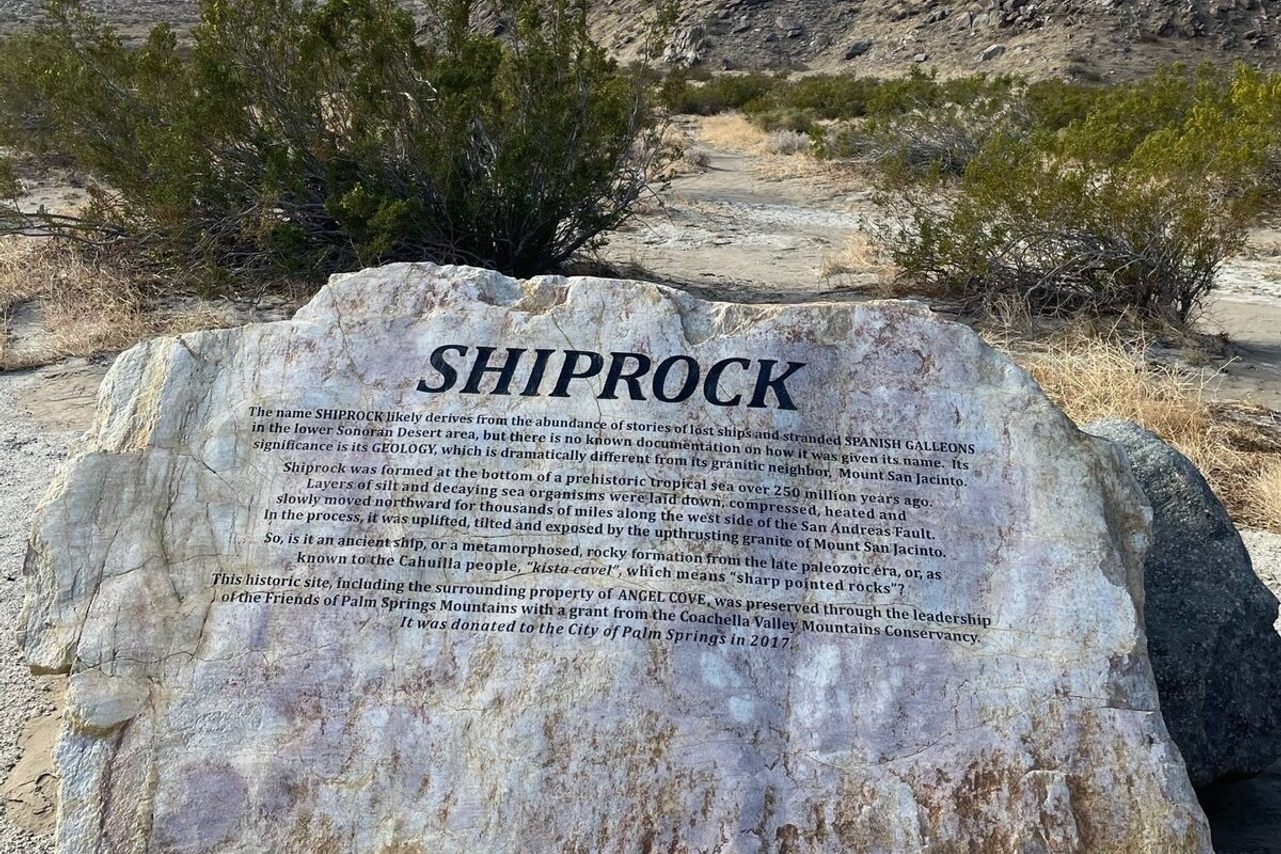
1. Crowley Lake Columns
In 1941, the city of Los Angeles built a dam which created a lake. Over time, the lake water eroded the rock around its edge, revealing a geological phenomenon called the Crowley Lake Columns—a beautiful oddity that stumped experts for decades, until fairly recently.
More than 5,000 stone columns line the eastern rim of Crowley Lake, each about 20 feet tall. They appear individually braided and connected by high arches, looking something like a bleached white forest embedded in the cliffs lining the lake.
As scientists at UC Berkeley determined in 2015, however, they’re actually the result of a 767,000-year-old volcanic eruption that once covered the region in lava. As snowmelt seeped into the volcanic ash, it emerged as steam, creating a sort of “pipe” effect in the now-hardened earth. The whole thing was buried for centuries and only emerged after the creation of Lake Crowley—an ancient feast for modern eyes and a puzzle for science, finally solved.
Crowley Lake Mono County, California, 93546

2. Coso Rock Art District
Long before paint, pens, and colored pencils (or any kind of pencil for that matter), prehistoric humans made art by etching shapes and figures onto rock walls. Experts aren’t exactly sure why they did this—whether it was for fun, for spiritual purposes, or otherwise—but what is certain is that one of the most impressive displays of indigenous rock art in the Western hemisphere can be found in Inyo County, California.
The area is believed to have been inhabited as long as 13,500 years ago, making it one of the earliest human settlements in North America. While not much is known of these early humans’ day-to-day lives, one mountain range in particular is covered in clues.
The Coso Rock Art District is dotted with etchings of bighorn sheep, reptiles, humans, and other vague or unknown symbols made by ancient peoples. While there are 100,000 individual etchings that have been identified, an unknown number are still unaccounted for. Get out there and find a few of your own!
Inyo County, California United States

3. The Echo Park Time Travel Mart
This L.A. store is your one-stop shop for all time-traveling needs. Whether you’re back in the Middle Ages and need Barbarian repellent or in the distant future and need robot parts, the Time Travel Mart has you covered.
The cheeky, kitschy novelty store is part art installation, part art exhibit, part convenience store, but it’s also a facade for 826LA, an area non-profit that offers kids free after-school writing programs. This program also self-publishes much of its student-written work land sells it in the Time Travel Mart, meaning that every purchase of Mammoth Chunks, Time Travel Sickness Pills, Time Freezy Hyper Slush, or short story collections written by area students goes toward bolstering youth literacy. Here, you can prepare for the past, and invest in the future.
1714 W Sunset Blvd Los Angeles, California, 90026

4. La Brea Tar Pits Dragonfly Fossils
What’s more impressive than extracting the bones of a 20,000-ton prehistoric mammoth from a tar pit? Extracting a 1-gram dragonfly, intact, from the same place.
The tar pits running through Los Angeles have preserved the bones of larger prehistoric mammals like saber-toothed tigers, giant sloths, and direwolves, but also “micro-fossils”—plants and smaller animals that help make up a more complete portrait of life back when downtown Los Angeles was an ancient forest.
Of course, conditions must be perfect in order to preserve these tiny organisms so well for so long, but those conditions were indeed met, making the George C. Page Museum’s exhibit of ancient insects something of a miracle. Visitors can see these prehistoric dragonflies up close at the Page museum, which is part of the Tar Pits complex, before getting a behind-the-scenes look at just how fossils are discovered, extracted, and analyzed from the ancient pits.
5801 Wilshire Boulevard Los Angeles, California, 90036

5. Petrified Tree
What’s the oldest attraction at Disneyland? No, it’s not “Peter Pan’s Flight” from 1955 or “Davy Crockett’s Explorer Canoes” from 1956—it’s a petrified tree stump that’s between 55 and 70 million years old.
The story goes that Walt and his wife Lillian were on a trip to Colorado to celebrate their 31st anniversary when they stopped in to Florissant Fossil Beds National Monument to view prehistoric remains. Walt decided, on a whim, to purchase the five-ton stump for his wife as an anniversary gift. Nonplussed, Lillian deemed it “too large for the mantle” (at 7.5 feet in diameter, the stump once supported a 200-foot-tall tree) and instead donated it to Disneyland the following year, where it stands to this day in front of the Golden Horseshoe Saloon in Frontierland.
52 Frontierland Anaheim, California, 92802

6. Cabazon Dinosaurs
No, that’s not a desert vision brought on by lack of water: it is indeed a pair of enormous dinosaurs towering over the highway! The beasts you see while driving along the I-10 are Dinny (pronounced “Dine-y”) and Mr. Rex, built by artist Claude Bell over a span of 20 years between the ‘60s and ‘80s.
Bell, a theme park artist and sand sculptor, originally imagined these sculptures as a way to attract drivers to the Wheel Inn Cafe, but hoped they would last longer than the roadside eatery. And while he died (in 1988) before he could realize his dream of a slide that stretched down Mr. Rex’s tail, that dream of his has come true. Today, they’re a beloved attraction for Californians and visitors alike, and have been featured in a Coke commercial, music videos, and the 1985 movie Pee-wee’s Big Adventure. You can still climb through the T-Rex’s mouth like Pee-wee did, and the site now holds a dinosaur-themed exhibit and a gift store packed with all sorts of dino-themed trinkets.
50770 Seminole Drive Cabazon, California, 92230

7. Shiprock
What goes up must come down. But sometimes, what was once down comes up—hundreds of millions of years later.
Such is the case with Shiprock, a rock formation that formed at the bottom of a tropical sea about 250 million years ago. Over millennia, as layers of silt and decaying sea organisms were compressed and moved northward along the San Andreas Fault, the rock emerged from underground with the upthrust of the nearby Mount San Jacinto. Visiting the now-iconic rock formation offers miraculous desert views of nearby mountains as well as a chance to scale what the Cahuilla people accurately named kista cavel, or “sharp pointed rocks.”
67491 CA-111 Palm Springs, California, 92262
Explore more family fun in California’s Ultimate Playground here

